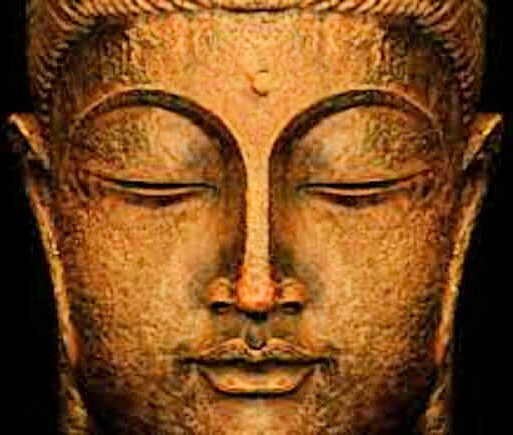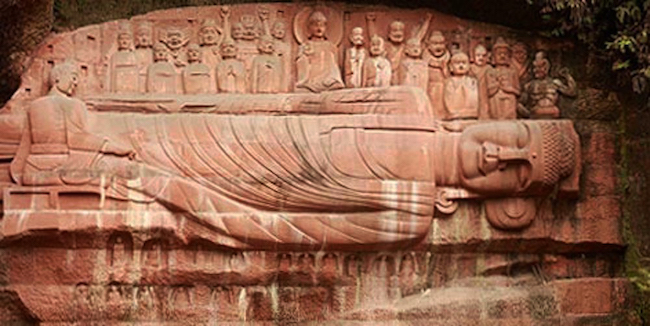[Editorial Note] This is another in the series of selected posts from 2012 reblogged and considered again, here in 2022.
I was in Pondicherry at the time, stayed there for one year then moved on to Bangalore. Looking at the post now, there’s nothing I would change, and it is refreshing to read it again. I notice that the mind is on automatic pilot when it comes to interpreting a wave of random sounds, as well as random notes – one has the beauty of birdsong, the other, an interpretation of known sounds and the nearest match for unknown sounds. There is no ‘self’ involved other than being the uncomplaining recipient of the end product.
The ‘collected’ random sounds has beauty too, ten years ago, most people had no ACs running only fans and the windows open, so you could hear the kitchen sounds for some way away. Also aluminum cooking pots or ‘vessels’ as they were known and the characteristic ‘ding’ sound, different from the stainless steel kitchenware of today. Susan Blackmore is still around, this was an early study and it has developed since then. I am still here and thinking not much has changed, in fact I could easily be learning from the past. These are postcards from the present moment, the ‘here and now’ as it was there and then.

(Reblog POSTCARD# 104/): South India: Birdsong. A small wave of tiny notes. Sitting on the cushion under a thatched structure built on the roof. Focus on breathing, soft warm air, it’s the end of the night. Dawn light coming up. The birds near to me are surprisingly loud, so much energy from such a small body, such a tiny breathing system. There are these silent intervals, to take a bird-size breath of air, I think, then a long musical ‘verse’, and another silent interval for breath; the ‘song’ moves on to the next verse and so on. The regular pace of these silent intervals contributes to the pattern of the verses. Birdsong is a ballad, a story about something that goes on and on; more than enough; an abundance. It blows away the scarcity of my small mindedness. I can see why they call it ‘The Dawn Chorus.’ Sky is full of sound, a huge chord played on an instrument with a great number of strings
Listening consciousness and sound object are one and the same thing, there’s an affinity with birdsong. Maybe it’s about acoustic resonances of the bird cranium being all of a oneness as far as we other living creatures in the world are able to perceive it. And, part of it too, are the echoes in the spaces between things: reflective surfaces, tree trunks, branches, walls, the air, clouds. Sympathetic resonances create multiple frequencies like the echo it makes on the underside of my thatched roof. And now it’s gradually diminishing; no grande finale, just a musical occurrence that takes place every day and gets forgotten about as soon as the sun rises in the dramatic way it does, expanding into our lives and everything becomes secondary to that main event.
Other sounds become heard; ordinary household noises, miscellaneous gentle ‘clatter’ from houses through open windows. Dishes clink, aluminium pots make that dull ‘ding’ sound. A shout, partial sound of a goat. child cries, cock crows, dog barks, a bicycle bell, street trader’s call, a car horn honks. Something clinks, and it goes on, individual recognisable sounds all appear in consciousness exactly as they occur, no end to it. Each has its own space, situated in its place in a clear sequence, one after the other.
I’m thinking there’s something about it that suggests a composer could create an orchestral symphony out of this? But it doesn’t work that way, I realise. It’s not the ‘actual’ sound I’m listening to, it’s the ear consciousness function that is set to rationalise the flow into an orderly pattern of ‘virtual’ sound. Each unit of sound has a place, according to how the consciousness function selected it, unknown partial sounds are replaced by known sounds, ear consciousness triggers a process so the object is placed according to the ‘closest match’ that can be found in the filing system.
The actual sound space I’m surrounded by may well be a tremendous complexity of pieces of things; an ocean of permutations. There’s some insight into what this amounts to but I know I’m not even taking on anything resembling the scale of it. I seek stability from this chaos: the ‘self’ shapes the randomness of the universe into a manageable chunk and I can settle with that thought.
‘In the normal way, attention shifts from one thing to another. Surprising events grab the attention: other chains of thought wait to be finished as soon as there is a gap. So there is never any peace. This is efficient in using all available processing capacity, but what does it feel like to be … in such a system? I suppose it feels like most of us do feel – pretty confusing. The only thing that gives it any stability is the constant presence of a stable self model. No wonder we cling to it.’ Dr. Susan Blackmore [Check out: Science tackles the self ]










You must be logged in to post a comment.